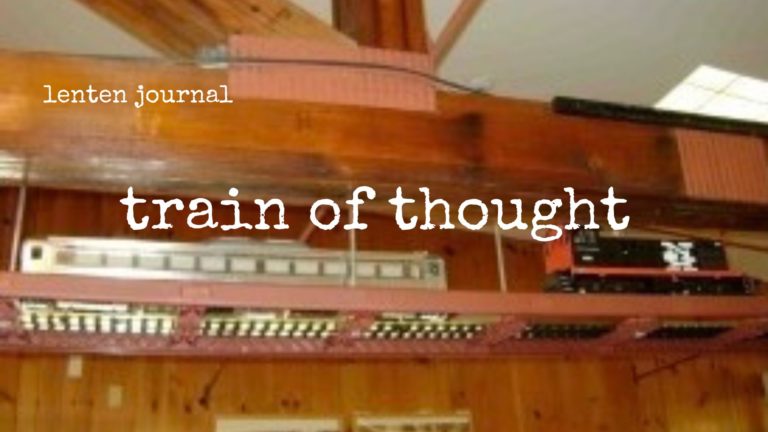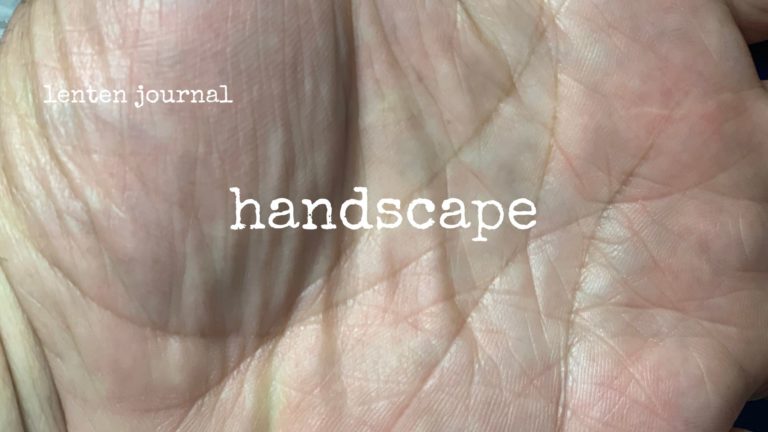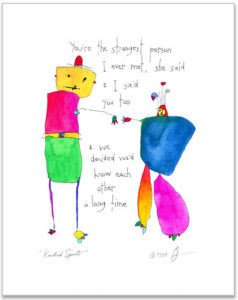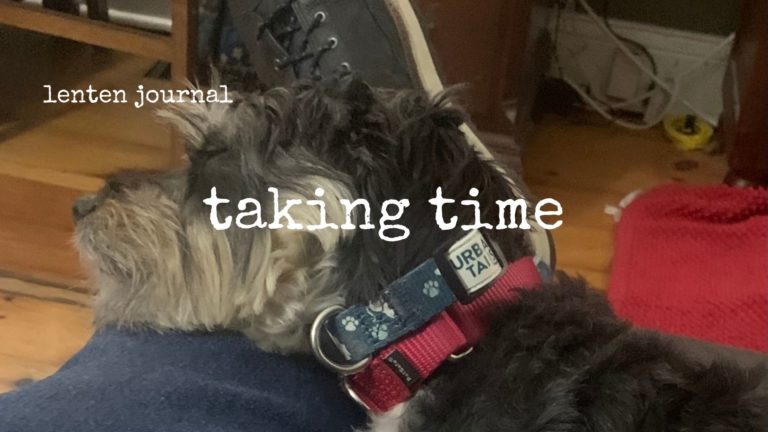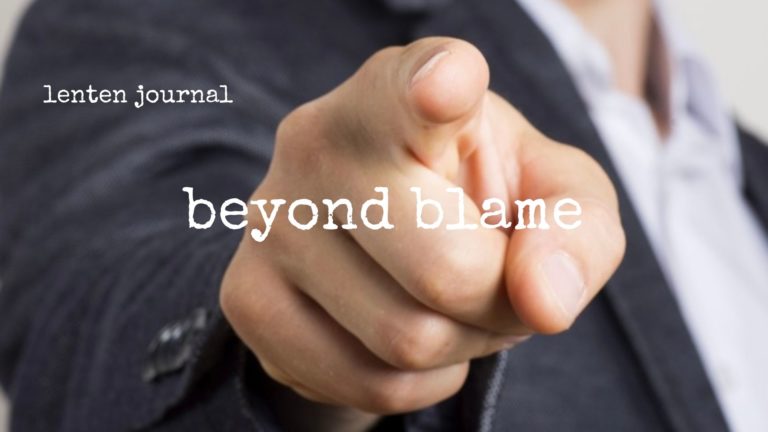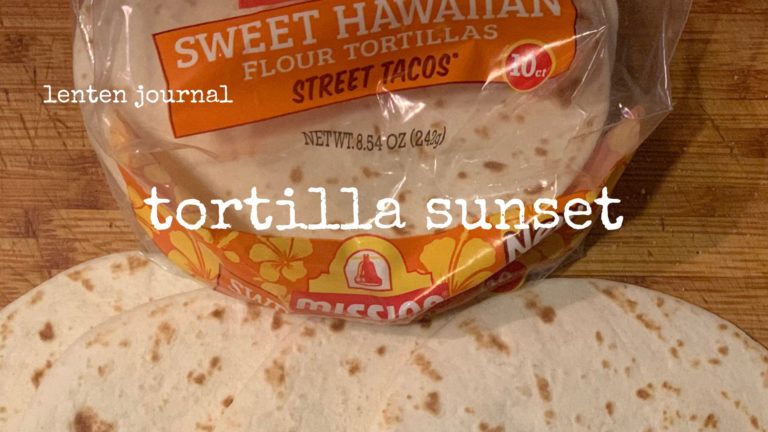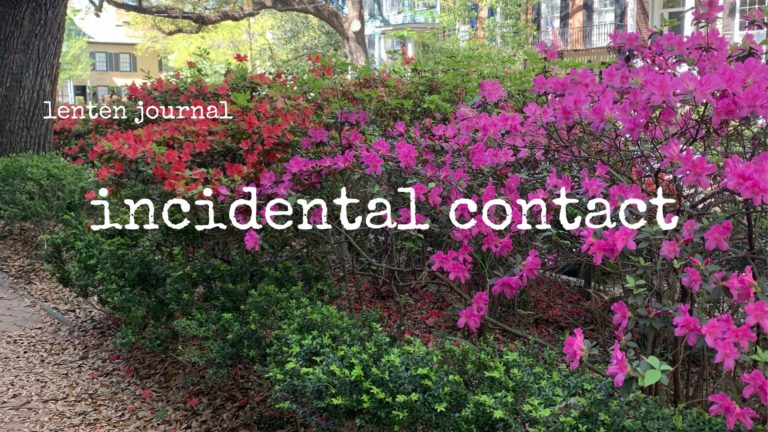The passage for my sermon this week is John 9:1-11, which is part of the story of Jesus healing a blind man. There are a lot of sermons to be found in this passage, but I got caught by the question the disciples asked: “Who sinned that this man should be born blind?” I hope it speaks to you.
_________________________
Our passage this morning is a great example of the adage, the answers we get are often only as good as our questions. The best example I know is from what is now a really old movie–The Pink Panther Strikes Again. The bumbling Inspector Clousseau is checking into a hotel and sees a little dog sitting next to the reception desk.
Clouseau: Does your dog bite?
Hotel Clerk: No.
Clouseau: [bowing down to pet the dog] Nice doggie.
[Dog barks and bites Clouseau in the hand]
Clouseau: I thought you said your dog did not bite!
Hotel Clerk: That is not my dog.
Had he asked a better question, he might have avoided a puncture wound.
One morning, my mother-in-law, Rachel, came into the kitchen and asked me, “Are you making cinnamon toast today?” (She loves cinnamon toast.)
“Not today,” I responded; then, as she just stood there looking rather forlorn, I realized what she asked was not her true inquiry.
“Would you like some cinnamon toast?” I asked.
“Yes, please,” she said–and then we had a discussion about asking for what she wanted. And we laughed.
The question the disciples asked as they passed a blind man says a lot about the way they thought about the world and how God works in it: “Whose sin caused this man’s blindness–his or his parents?”
In a way, it’s a question that presupposes an answer–the man’s blindness was someone’s fault; they just wanted to know who to blame. And, though it is not an uncommon question, it is a damaging one. The man was born blind, which was no one’s fault–but that is not what they asked.
Across the centuries, the way Jesus’ answer has been translated has created some issues as well. Look back at our reading this morning:
Jesus answered, “Neither he nor his parents. This happened so that God’s mighty works might be displayed in him. While it’s daytime, we must do the works of the one who sent me. Night is coming when no one can work. While I am in the world, I am the light of the world.”
It comes close to sounding as though his blindness was a setup for Jesus to show up, as though our difficulties have to have a purpose. The Greek manuscripts had no punctuation; sometimes, they didn’t even separate the words well, which means translators had to decide how to divide sentences and create phrases. Listen how different it sounds with a repunctuation:
Neither he nor his parents. So that God’s mighty works might be displayed, we must do the works of God who sent me.
The Message translation communicates it even more effectively:
Walking down the street, Jesus saw a man blind from birth. His disciples asked, “Rabbi, who sinned: this man or his parents, causing him to be born blind?”
Jesus said, “You’re asking the wrong question. You’re looking for someone to blame. There is no such cause-effect here. Look instead for what God can do. We need to be energetically at work for the One who sent me here, working while the sun shines. When night falls, the workday is over. For as long as I am in the world, there is plenty of light. I am the world’s Light.”
The miracle that followed is interesting for a couple of reasons. The first is that the blind man didn’t ask for anything. He is silent in the story until after he can see. The second is it’s messy. Jesus spits in some dirt and makes mud, smears it on the man’s eyes, and tells him to go wash it off. The man finds his way to the water, washes his face, and can see–all without ever seeing Jesus.
Had Jesus been willing to let the disciples’ question direct the conversation, the man would have stayed blind, because the disciples weren’t thinking about how they could help, only who they could blame.
It’s a posture that is far too easy to take, particularly when the problem we see feels too big to change.
Not everything happens for a reason.
Let me say that again: not everything happens for a reason.
Life is not as simple as an equation of cause and effect where everything balances out, or a ledger that records assets and debts, or a scorecard that keeps track of who’s winning and who’s losing. My depression is not a sin. If you see someone in a wheelchair, that doesn’t mean they are responsible for their condition–whatever it is–anymore than it means God is going to use them to make a point.
Who can we blame for this? is never a good question because it doesn’t create room for healing. It’s a dead end.
I don’t mean that we have no responsibility in life, or that there are not situations when the consequences of our choices or words or actions do damage that we need to shoulder. If I back into your car in the parking lot—like the time I backed into the storage Pod in our driveway (but that’s a story for another time)—I’m responsible for the bent fender. But bearing responsibility and placing blame aren’t the same thing.
For me to place blame is a way for me to make sure I had nothing to do with it. If we can blame racism on people in the South, then we don’t have to take responsibility to make changes right here in our town. If we can blame poor people for making choices that brought their circumstances on themselves, then we can avoid facing our privilege. If we can phrase our questions so that the answers we get make us feel as though the needs around us are not our problem, then we don’t have to live compassionately.
I don’t know why the disciples asked about whose sin caused the man’s blindness, but the question was a dead end, as I said earlier. They were not asking because they were concerned with the man; they were dealing with an issue. They wanted to place blame, which would have done nothing more than satisfy their curiosity.
Jesus stopped and made it about the person. He moved beyond blame. He created a relationship. The man became the center of attention, which created space to see what God could do–with everyone involved.
When we think about our lives, or about our life together as a congregation, what are our questions? Are we asking things that die with one word answers, or open-ended queries that create possibility? Do we trust that God could do something with us in this place in these days?
Our answers are only as good as our questions. Amen.
Peace,
Milton
